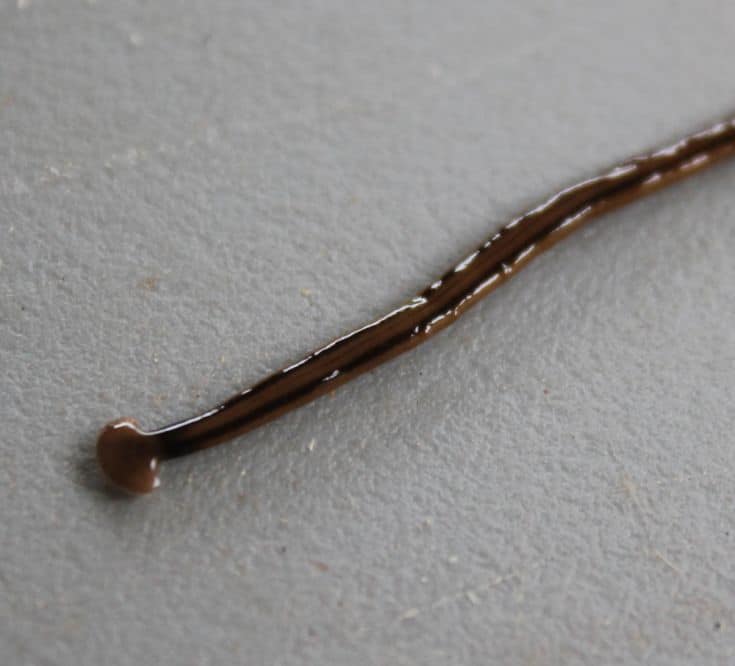All gardens have pests; snails, termites, and worms are a few common ones. With that said, some pests are worse than others. The Hammerhead worm is one of the worse pests that your garden could encounter.
So, should you do it? Should you kill a hammerhead worm if you find one in your garden?
Yes, you definitely should kill all the hammerhead worms you can find. Dissolve them in salt and or vinegar, or use citrus juice or boric acid.
Note that cutting them in half or into several pieces won’t work. They’ll regenerate into multiple worms. In the case of an infestation, you can spray them with various oils/pesticides that are geared specifically toward killing them.

What are Hammerhead Worms?
Hammerhead worms (proper name: Bipalium Kwense), are a predatory form of flatworm with a distinctly hammer-shaped head. There are a variety of species, and each one a has different size, color, and pattern – different Bipalium species have their own distinct stripes.
They’re typically found in tropical and subtropical regions with a nice amount of moisture and high humidity.
This worm species is considered invasive in both the United States and Europe. They feed on earthworms, mollusks, and other hammerhead worms. They are also poisonous – they’ve been found to contain a neurotoxin (specifically: tetrodotoxin).
If that name sounds familiar, that’s because it’s the same stuff that’s found in pufferfish…yeah, it’s that bad.
Hammerhead worms can grow up to 1 foot (40 centimeters) in length and are practically immortal. If you cut one in half, you end up with two worms. Cut one into seven pieces and you get seven worms! They don’t go after humans, but they are an environmental disaster.
Other animals won’t touch them because of the neurotoxins they secrete which can make an animal (i.e. a dog) very, very sick. It may not be a fatal snack but it won’t be pleasant either.
Their eating habits make them even nastier! What they do is they track down an earthworm, and grab hold of it using its potent neurotoxins to paralyze the prey:
From there, the earthworm is dissolved and slurped up like a milkshake… I never thought I’d be comparing a worm’s eating habits to drinking a milkshake.
Their favorite snack – earthworms are vital to the environment; they cultivate the soil to grow plants. No earthworms in the soil means that the soil can’t really be cultivated well – meaning no plants. Hammerhead worms will wreak absolute havoc on your garden.
With that in mind, how do you kill these pesky things?
Killing Hammerhead Worms
Well, first off; here’s what NOT to do. Don’t try and cut it in half. As I said before; it will just grow into two worms. That said, killing these things can be done in a few different ways.
Pouring salt or vinegar on them is a pretty effective method but you can also spray them with citrus oil or use boric acid to increase the acidity of the soil – hammerhead worms can’t handle acidic environments.
If the problem is more widespread and you have an infestation of hammerhead worms that’s a whole other ball game. There are, of course, a variety of ways to deal with an infestation.
You can use soap sprays (which prevent them from breathing), neem oil (a natural pesticide derived from the neem tree), pyrethrum (a highly toxic natural pesticide), and some synthetic pesticides (obviously not all at once) will help to deal with the worms.
I’ve read that it’s possible to drown them in a container with water, but most articles that deal with this subject say to dissolve them in these substances and make sure that they’re completely dissolved.
Unfortunately, this is easier said than done. You can’t spray a general area to kill these worms; you have to zap each one individually.
Although, I suppose if you used boric acid it would be possible. Raising the acidity of the soil in your garden on a large scale might prevent an infestation.
With all that said, it’s important to note that some of these chemicals can be toxic to humans as well; a good example is pyrethrum which is mildly toxic to us humans and deadly to hammerhead worms and other pests.
So, when working with these products or with similar products; a degree of caution should be exercised so as to avoid unnecessary injuries or accidents.
In Conclusion
Hammerhead worms are a predatory species of flatworm that prey on earthworms, slugs, mollusks, and other hammerhead worms. They are highly toxic, containing a powerful neurotoxin that they secrete to paralyze their prey.
Consumption is performed by dissolving the prey in enzymes and then slurping it up like a milkshake (yuck). Hammerhead worms are also close to immortal – chopping them up only results in more worms.
To kill them, you need to either cover them with some sort of poison or raise the acidity of your garden’s soil.
They don’t prey on humans or house pets, although, they can make your doggo very sick if/when eaten. In short: they must be killed in order to keep your garden safe.
Yikes, these things are nasty! Well, I hope all of you lovely readers found this article informative and that you’re now better prepared to deal with these ecological nightmares. Thanks for reading and I’ll see you soon.

Greg spent most of his childhood in camping grounds and on hiking trails. While he lives in the suburbs nowadays, Greg was raised on a small farm with chickens. He’s a decent shot with a bow, and a huge knife enthusiast. Find out more about Greg.

Thank you so much! Dpund onw of these suckers on back patio. Ugh!
TL:DR- I think it depends where you are.
I have to disagree. In the North East and North Central USA, glaciated regions lost their earthworm populations. Over thousands of years regional plants evolved to not need them and other species filled in the composting role. Since European colonization and global trade, many invasive worms and snails were introduced, and they are now destroying old growth forests and depleting soil nutrients and ability to support native plants.
I would be happy to find Hammerhead worms in SW Ohio, where Asian Jumping worms are taking over due to warm Winters and 90% of the worms are invasive and destructive European Nightcrawlers and Russian Red Wigglers.
Aren’t earth worms invasive in the usa as well
Only in regions that were historically glaciated. The South never lost their earthworms, but the North East and North Central USA lost all their earthworms thousands of years ago when the area was under glacier and/or heavy snows.
what eats the hammer head worm?
Will boiling them work as well? Then they can be added to the compost pile.
Are worms being spread by contaminated soil we buy?